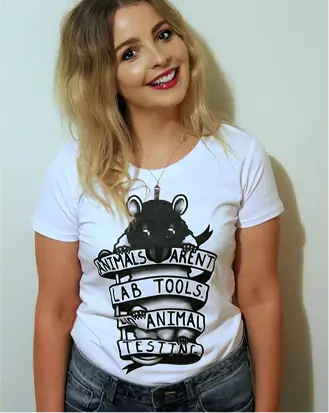Dogs have been used for science in NZ in a variety of ways, including both non-harmful and cruel methods. People are understandably upset by invasive experiments. Companion Animals NZ reported 31% of NZ households include dogs, with most of them stating companionship, love and affection as reasons to getting dogs.1 Research has repeatedly shown the strong bond between dogs and their person and more than once equated it to the bond between parent and child.2,3,4
You can actually register your dog for (likely non-harmful) research at the University of Auckland.5 And Massey University has a Working Dog Centre to do research specifically into genetics and health issues of dogs who are used for work.6
For example, dogs in NZ have been used for:
- testing insecticides, pesticides and other toxins
- attempting to model human diseases and conditions
- measuring the safety of food and ingredients
- testing pain relief
- researching disease detection
- researching nutrition and how it affects biological functions and food preferences
- testing new treatments for skin infections
- studying performance, nutrition and underlying causes of disease in working dogs as a vital part of the animal agriculture sector (in 2009, there were 150,000 working dogs in NZ)
- researching fitness and training regimes in police dogs and training dog handlers
- teaching vet and vet nurse students basic concepts like animal handling and basic clinical/husbandry skills.
Places that use dogs for science in NZ include private companies, universities, and polytechnics.
Dogs used for science in NZ are sourced from breeding facilities, farms, city council pounds and other public sources.*
*According to the Ministry for Primary Industries, public sources include: Public donations, animals obtained from a pound, a pet shop or other public sources. This includes companion animals who are used for the duration of the exercise (e.g. veterinary nurse training).
Discover real-life examples of how dogs have been used in NZ below!
- https://www.companionanimals.nz/2024-nz-pet-data-report
- https://psycnet.apa.org/doi/10.1037/0735-7036.112.3.219 (1998)
- https://doi.org/10.1016/j.cpnec.2021.100071 (2021)
- https://doi.org/10.1027/1016-9040/a000552 (2025)
- https://clevercaninelab.auckland.ac.nz/research/
- https://www.massey.ac.nz/about/colleges-schools-and-institutes/college-of-sciences/our-research/research-projects-and-groups/working-dog-centre
Testing fluid management of dogs during anaesthesia
Dogs were anaesthetised. Their heart activity was measured while hey were injected with calculated amounts of fluid.
Testing working dogs for internal parasites
Faeces and blood samples were taken from working farm dogs.
Teaching dogs to smell out koi carps (2019)
Three pet dogs were trained over several months to identify koi carb smell in water samples.
Testing nutritional value of new pet food
Cats and dogs were fed a test diet exclusively for several months. Some adults are kept in metabolic chambers for 10 days, and blood samples are taken at the end.
Testing a possum poison for other animals’ safety
Dogs, chickens and wild-caught cats were fed dead possum. Once they got used to eating this, they were fed possums killed with sodium nitrite, and signs for poisoning were monitored.
Assessing blindness in racing greyhounds
Greyhounds were treated with pupil dilation drops to examine their eyes. Some were brought to a vet clinic for further tests.
Practising vet skills on different species
Students are taught anatomy, physiology, animal handling and basic clinical/husbandry skills. Dogs were used in for training in anaesthesia classes.
Testing if bone marrow is different in different body parts
Dogs were killed, and samples of their bone marrow were taken from different locations on their bodies.
Analysing CT scans of dogs
Veterinary data of German shepherd dogs were analysed; most were police dogs.
Investigating a muscle weakness disease in dogs
Blood samples were taken from dogs with signs of myopathy within the regular veterinary treatment. A total of 22 of the 86 cases were euthanised.
Investigating separation anxiety in Greyhounds
The occurrence of separation anxiety with rehomed Greyhounds was investigated over one year.
Testing a possum poison for other animals’ safety
Dogs were fed dead possum, either whole or minced. Once they got used to eating this, they were fed with possums killed with sodium nitrite, and signs for poisoning were monitored. In the end, all animals were killed and dissected.
Measuring lean body mass of working dogs
Blood samples were taken from dogs, while they were deprived of water for 2 hours.
Teaching dogs to smell out koi carps (2018)
Five pet dogs were trained over several months to identify the smell of koi carb from water samples.
Testing interest of dogs in different kiwi bird items
Dogs were taken to a small area to interact with different items that looked or smelled like kiwi bird. Some dogs had patches of hair shaved off to attach a heart rate monitor.
Testing if blackcurrant extract is toxic for dogs
Dogs are given blackcurrant pills for several days. The number of pills increases over time up to 60 tablets. Their health is monitored.





